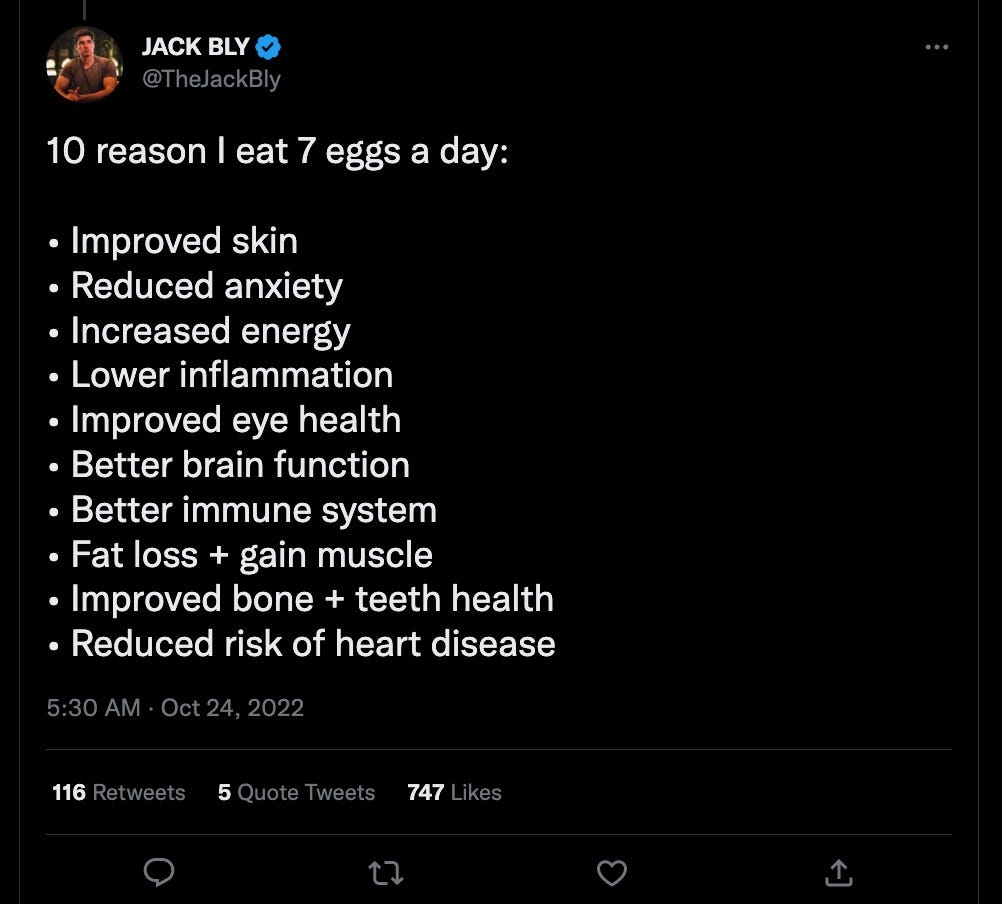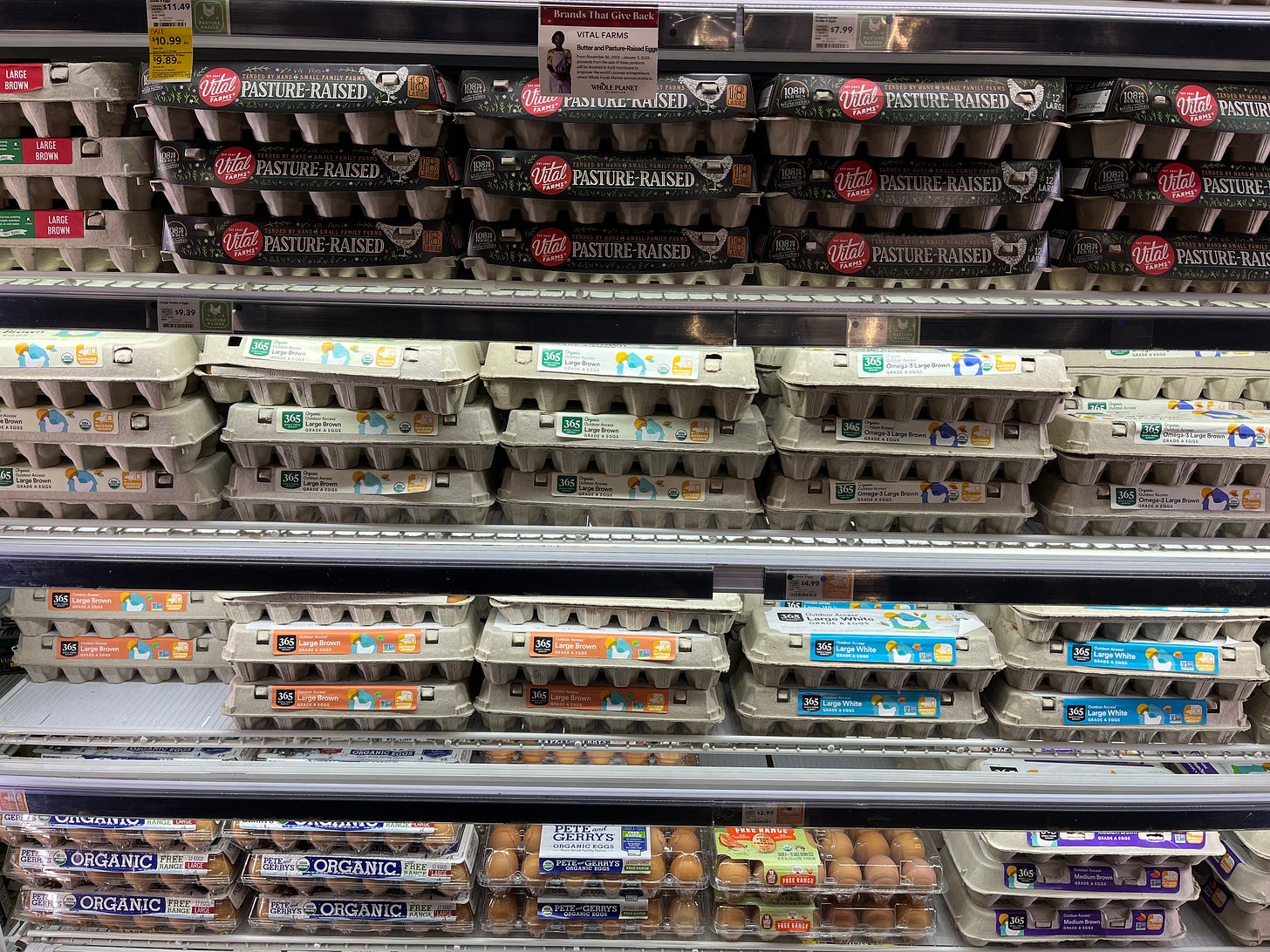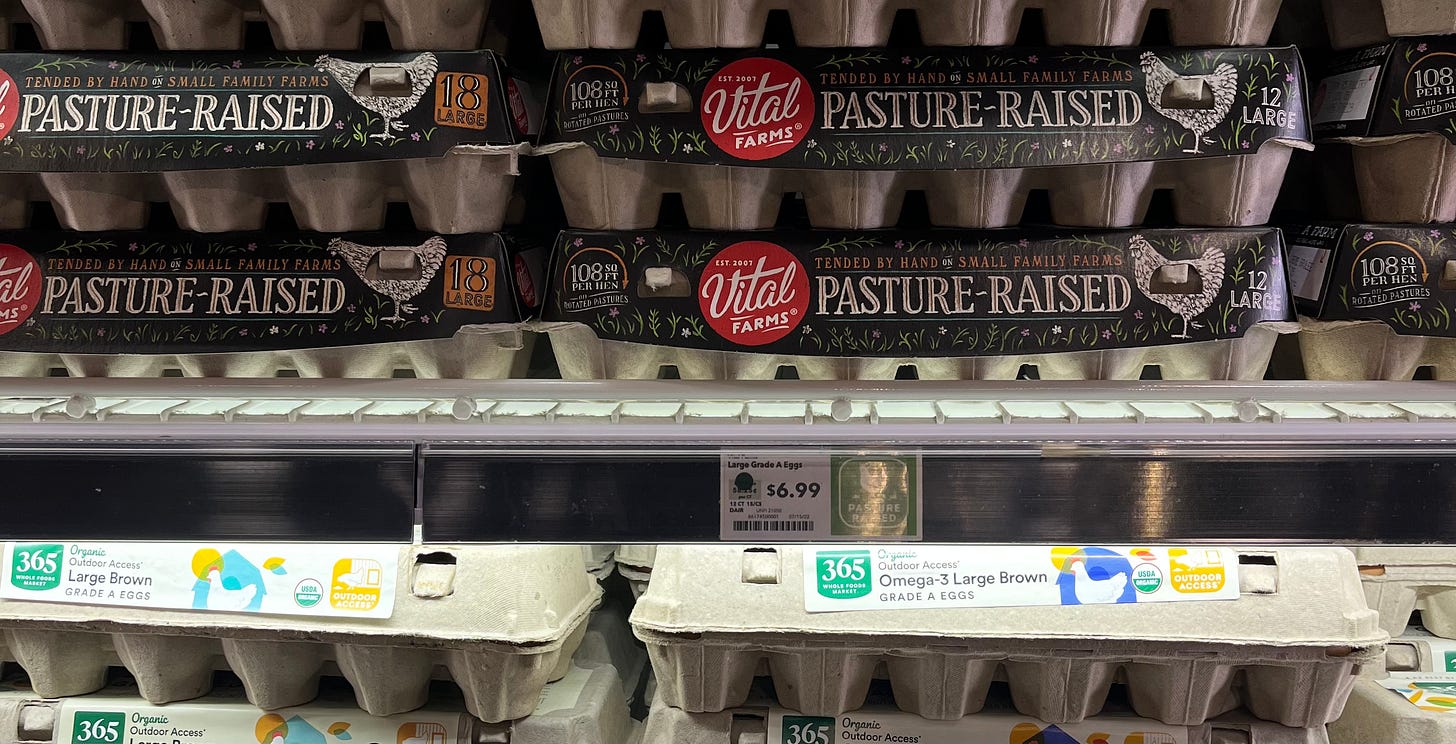Why haven’t other proteins been Eggland’s Best-ed?
Prime Future 131: the newsletter for innovators in livestock, meat, and dairy
The most tragically underrated animal protein? Eggs.
Which is weird because eggs are seemingly a magical food from a nutrition standpoint.
My fitness journey led me to the egg case this year…a lot. Per capita consumption in the US is ~294 eggs. I start almost every day with three eggs, so I’ve got a run rate ~4x per capita consumption. lol
I'm ok with it though because eggs also have that price per gram of protein superpower, even with record-high prices right now in the US because of bird flu.
If possible, perhaps the retail egg case is even more interesting than the egg itself. And that’s our actual topic today.
I recently spent a weirdly long time looking at the egg case in a couple of different grocery stores; here are my takeaways:
(1) There is (finally) a tiny space for ready-to-eat products, aka egg snacks.
If the past 10 years were when the meat snack category stepped up its game in a big way, and it did, it's only in the last few years that the egg snack category has become a real thing. Here for it.
(2) For the Whole-Foods-esque shopper, there is some pretty packaging and a lot of marketing confusion.
One of my favorite egg-producing companies is a family-owned business with 8 million hens. Sure, 8 million is a large number, but it's nothing compared to the largest producer in the US who has ~47 million hens…you might even call 8 million small, relatively speaking.
This raises some questions about all the ‘small family farms’ branding in the Whole Foods egg case; what is a small family farm? What’s the definition of small…of family…of farm? Who decides?
(3) Ten years ago the largest claims on a carton seemed to be about antibiotic use, now it’s primarily about housing systems.
Which has led to a confusing free-range vs. cage-free vs. outdoor-access debacle. Please let there not be a test.
And at $12.49 per dozen, like, what even is this?
Wait, are these eggs meant to be gifts? WHAT IS HAPPENING
(4) For the non-Whole Foods shopper, eggs are a commodity.
Almost 30% of the hens in the US are now in cage-free housing. The shift towards specialized housing has been relatively rapid. While the obvious question is, at what percent specialized housing do eggs produced in those environments stop generating a premium, in the egg case today it’s not uncommon to see a mismatch between pricing and housing systems declared on the carton.
As Whole Foods goes so goes the industry? ….and so goes the premium as the new thing becomes commoditized.
So maybe the better question is, what will the next marketing dimension of differentiation be? Genetics? Technology?
(4) The most fascinating innovation in the entire shell egg category turned 30 years old this year:
the creation of the Eggland's Best brand and, more importantly, the business model.
Here's how the company website describes the origin story:
"In 1992, we set out to create a better egg. Egg consumption was in decline. Consumers were concerned about cholesterol, and fresh, quality eggs were hard to come by. So we asked ourselves how we could deliver the freshest, best-tasting, most-nutritious egg possible and make it accessible for everyone."
What's notable is that in 1992 there was little effort being put into branding eggs (and Whole Foods was still a <10 store twinkle in the founders’ eyes) so the creation of a brand in and of itself was a novel idea.
Interestingly the dimension that EB differentiated on was neither medication (like in the early 2000's) or housing (like the 2010's - now) but on feed formulation.
EB leveraged the 1990’s cultural focus on human health with a message about the link between animal feed and egg nutrition characteristics.
From their website:
"As the saying goes: “you are what you eat.” We understood that to create a better egg, it would have to be better from the start. Through rigorous research and careful sourcing, we formulated our own unique patented feed to give all of our hens a wholesome, all-vegetarian diet. This nutritionally superior diet means Eggland’s Best hens lay naturally superior eggs."
More novel still was the use of a franchising business model in animal agriculture.
Eggland's Best did not and does not own any hens; they work with producers who meet their specs, comply with their production standards and license the use of the brand.
A pre-cursor to Airbnb and Uber, Eggland's Best was a super early asset-light business model: the most well-known egg brand by a company that owned no chickens, no chicken houses, and no farms.
I can point to only a few examples of the Eggland’s Best business model working successfully in the other proteins, why is that? I want to explore that question in 2023, so I welcome your insights & hypotheses.
Two disclaimers to wrap around this conversation:
Where there's a market, there's a way. If people are willing to pay for bougie blue eggs and the producer’s economics work, then by all means somebody raise bougie blue eggs. There should be a premium option in every category.
Once again, production systems are complex ecosystems. Pulling the ‘more space per bird’ lever can increase metrics like mortality but "more space, higher mortality" doesn’t look great on an egg carton, ya know? I say that not in a "we need to educate consumers" kind of way (barf) but in a "such is the world we live in, and egg producers have to make the hard decisions of balancing current consumer trends against future consumer trends against production realities and cost constraints when making huge capital outlays.” Maybe that balancing act is even a feature of the modern ag economy, not a bug? Either way, it’s a reality.
Anyway, happy holidays. Maybe Santa will leave $12.49/dozen eggs in your stocking🤞🏼










